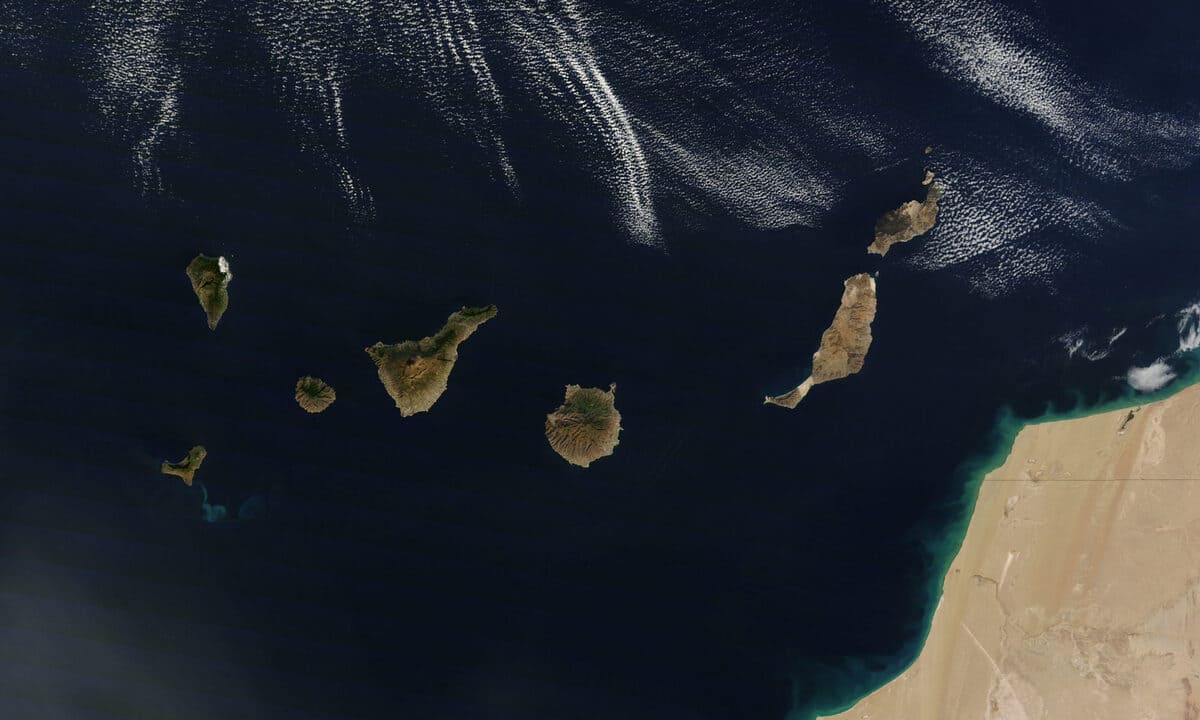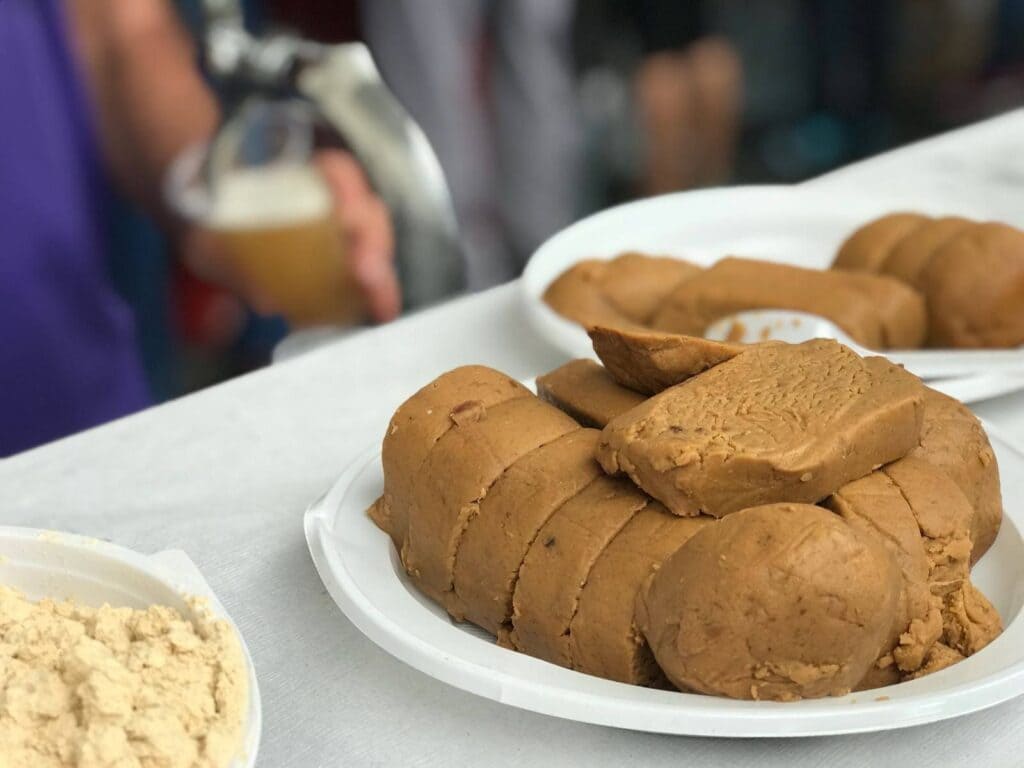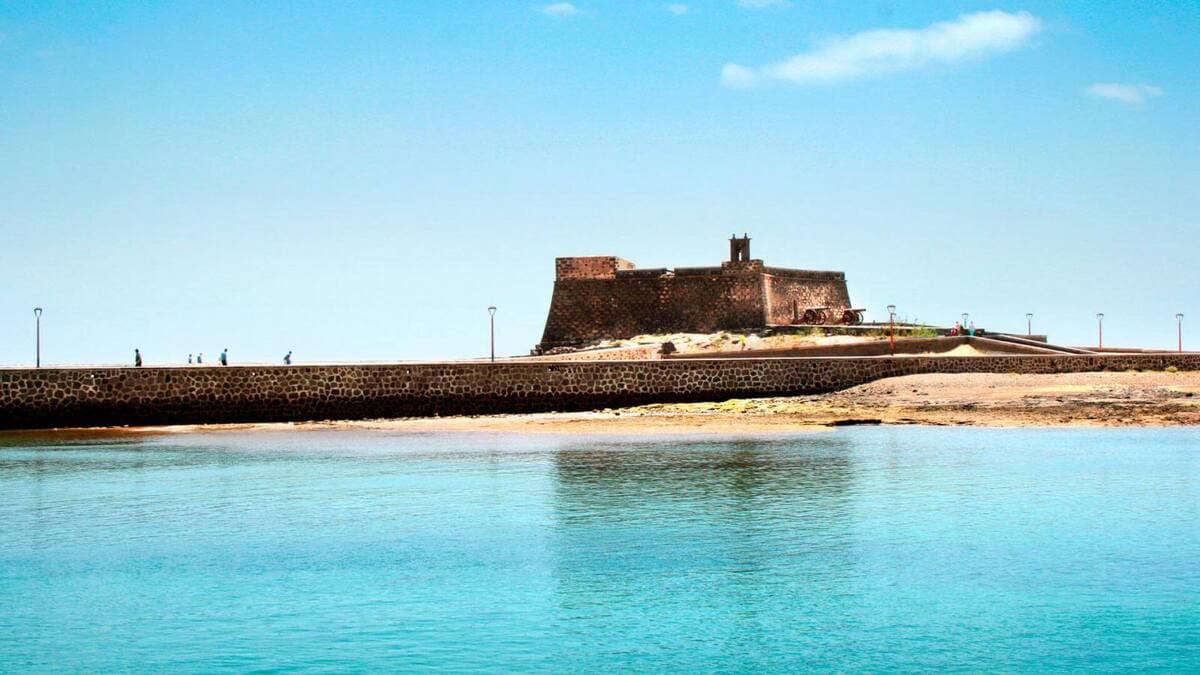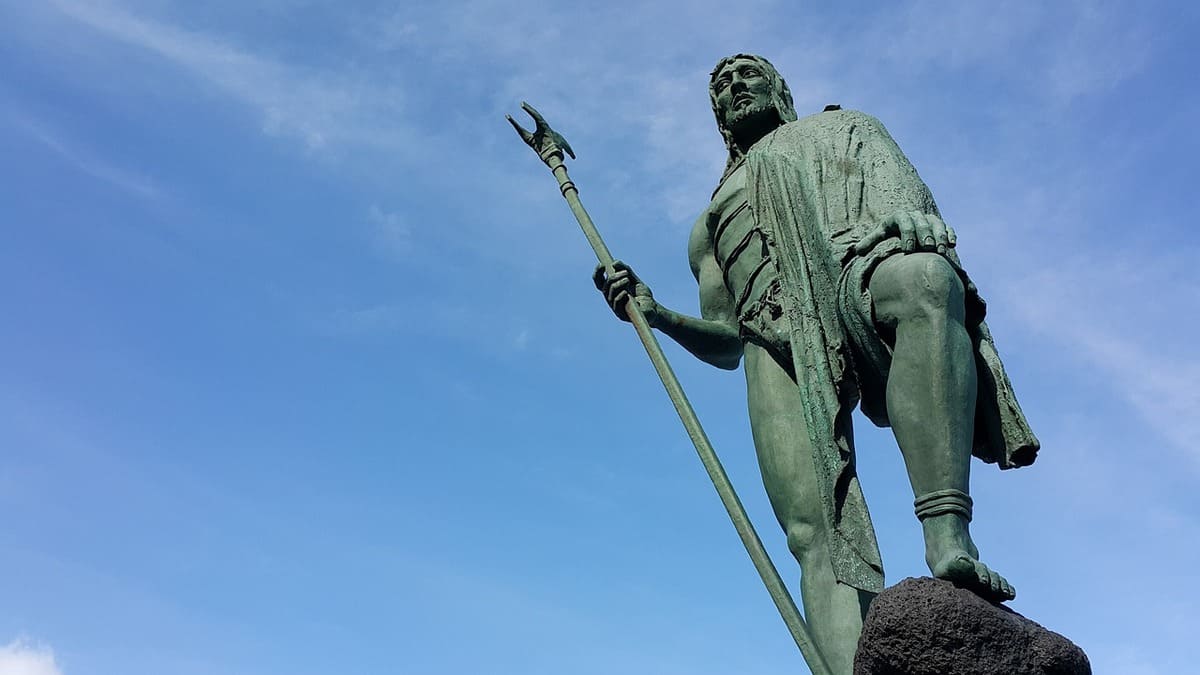The shepherd's leap, also known as "brinco canario", is an indigenous game with a long tradition throughout the Canary Islands. It comes from the movements that shepherds used to make across the rugged geography of the islands with the help of a spear, similar to the one used by club fighters and also typical of shepherds.
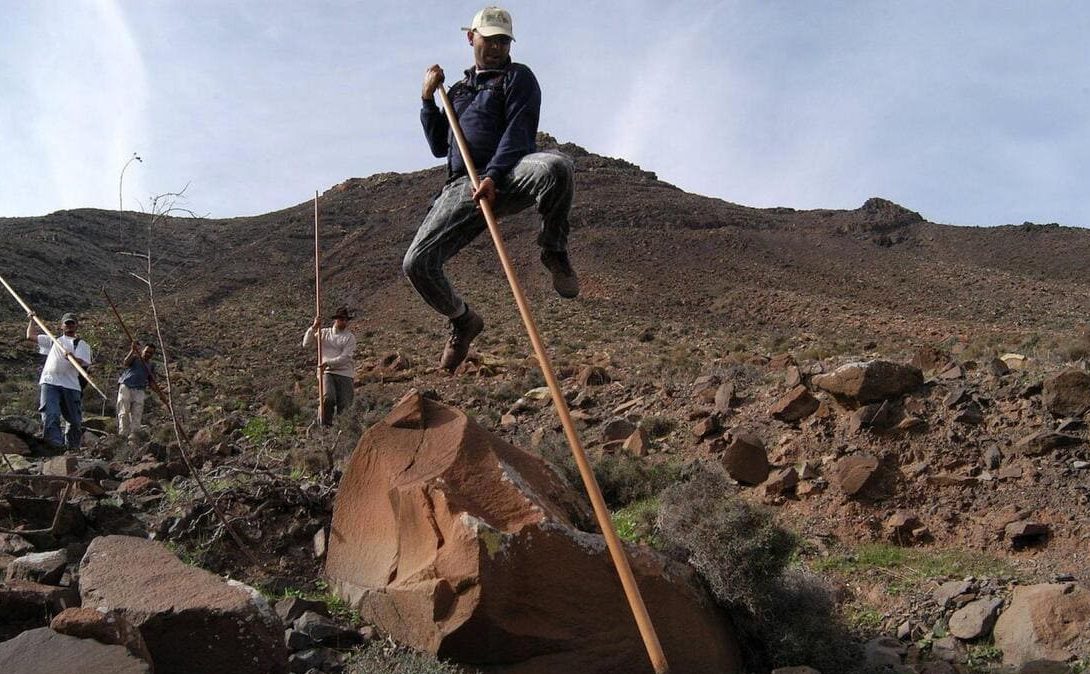
The special orography of the archipelago meant that the inhabitants of the islands, especially those in the more rural areas, had to use their inventiveness to get around. They looked for means and techniques that would allow them to overcome obstacles and this is how the shepherd's leap came about.
The stick used is known by many names: astia or lanza, on the islands of Tenerife, La Palma, La Gomera and El Hierro; garrote in Gran Canaria; or lata in Fuerteventura and Lanzarote.
History of the shepherd's leap
The origin of this activity can be found in the need for the aboriginal shepherds of the Canary Islands to move from one place to another over terrain full of steep ravines, slopes and sharp cliffs.
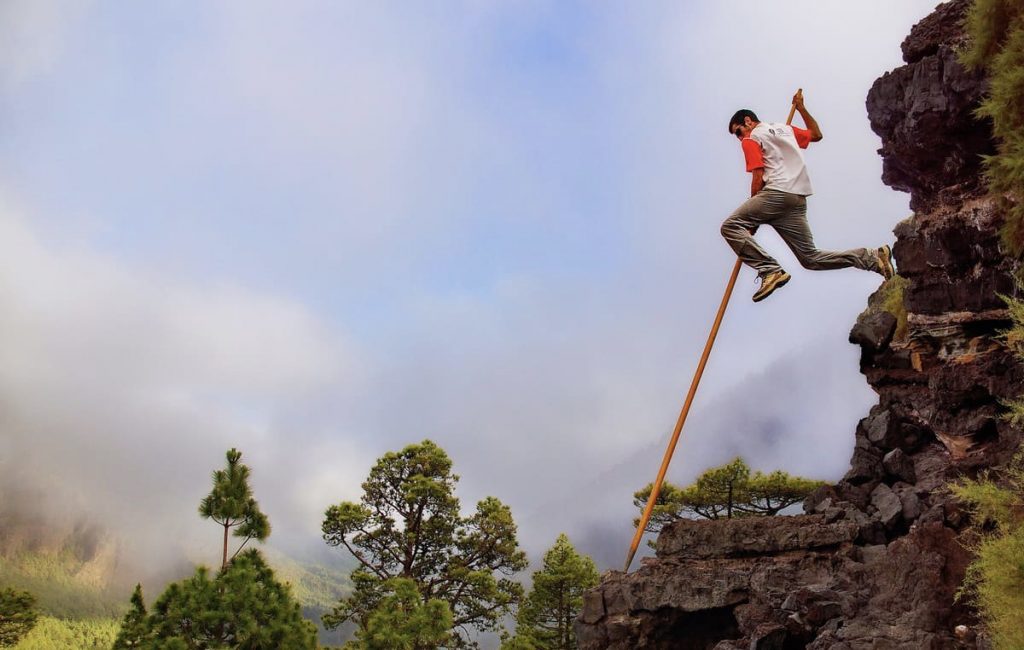
It was these first shepherds who developed this activity, to which they resorted in order to carry out their daily tasks and for which they used a previously worked long stick, which allowed their hands to slide. In addition, they finished it with a sharp point in order to be able to drive it into the ground or even, on occasions, they added the horn of an animal. After the Castilian conquest in the 15th century, the use of an animal horn was replaced by a metal point.
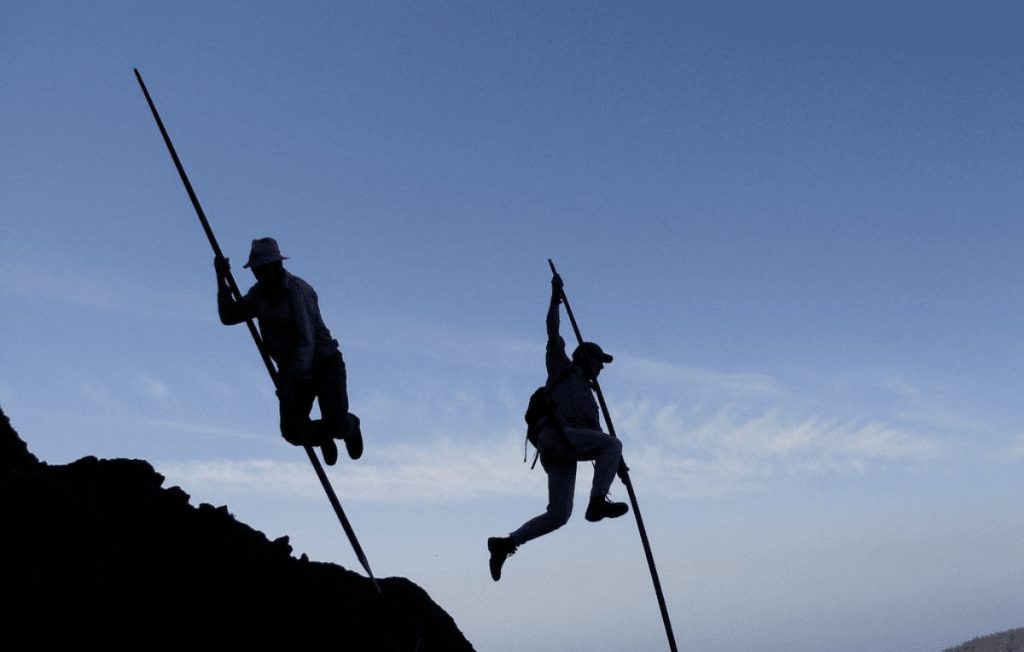
In 1994, the first jumping clubs or jurrías began to be created. These arose as a result of a series of fundamental objectives such as researching the origins of shepherd's leaping, teaching it so that it would not be lost and, above all, respecting the tradition. In 2001, the Canary Islands Shepherd Jumping Federation was founded, the formation of which had been in the making since 1994.
Description of the tradition
Shepherd's leaping is practised both in exhibitions and in competitions in which jumping distances and accuracy are measured. In addition, on many islands, activities such as trekking in difficult terrain where the spear is used in order to be able to continue on the path are carried out.

This wooden pole, normally made of canary pine, is widened at the bottom, where the metal tip is located , also called regatón and which, as already explained, is used to nail the pole to the ground. In this article you can learn more about the characteristics of the canary pine.
In terms of size, those used on the summits are longer and those used on the coasts are shorter. Their length varies between 2 and 4 metres, depending on the height of the ravines and cliffs to be climbed or descended. In turn, the size of the regatón varies according to the length of the pole, between 14 and 38 centimetres.
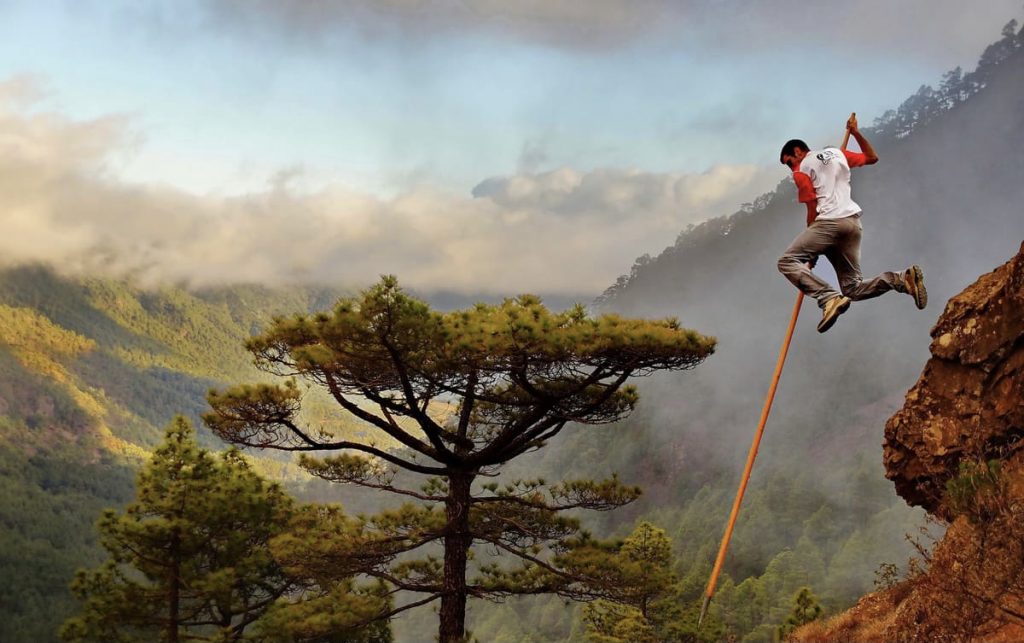
There are a multitude of techniques or tricks to perform the jump, but in all of them the position of the hands is very important. The most common technique is to slide down the pole. This is done, first, by aiming to nail the club to a point. Then the hands are placed, one at the top of the stick holding it and the other with the palm facing upwards. Finally, the person must let themselves slide down the pole until they reach the ground. The separation of the hands will depend on the technique to be performed, but the one underneath cannot be bent, while the one on top must be flexed.
Archipelago distribution
Shepherd's leaping is practised throughout the Canary Islands. However, it must be taken into account that on islands such as Fuerteventura and Lanzarote, where the elevation of the terrain is not so steep, lower jumps are made. On the other hand, on islands such as La Palma, they can use clubs up to 4 metres high. There are currently 28 jurrias spread throughout the archipelago, except on the island of El Hierro.
If you are interested in Canarian traditions and sports, here is another similar article: The Canarian stick, an ancestral vestige of the archipelago.
Paula Vera
Photos: diariosur.es, fotocommunity.es, alegando.com, vistaalmar.es, youtube.com
